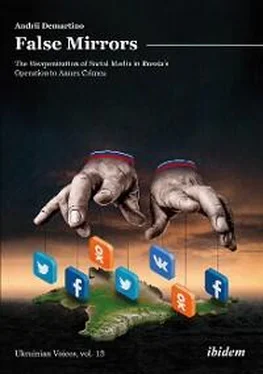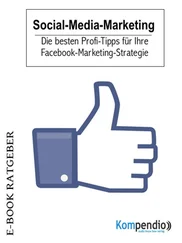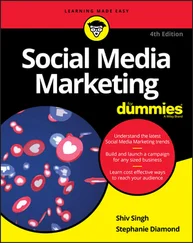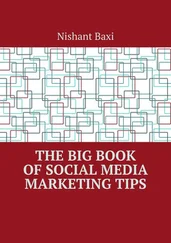This study investigates the techniques of using social media to fulfil aggressive foreign policy tasks, as exemplified by the Russian Federation’s operation to annex the AR of Crimea in 2014.
Analysing the level of information effectiveness of the “Crimean operation,” it is worth noting the synergy effect produced by combining the use of social media with the broader Russian anti-Ukrainian propaganda campaign. In this case, social media, which were trusted, and where the information received from other sources (primarily television) was verified, have played the role of a “false mirror,” which falsified the information. That, in turn, has produced the effect of double manipulation, via television and social media, thus creating the environment of lies.
Based on the analysis of the techniques for Russia’s information influence, this study offers effective countermeasures, which may be taken into consideration when formulating the national information policy in Ukraine and other states.
Keywords: the Autonomous Republic of Crimea, the AR of Crimea, annexation, social media, the Russian Federation, hybrid warfare, new-type warfare, information operations, information influence, fakeaccounts.
The annexation of the Autonomous Republic of Crimea (AR of Crimea) by the Russian Federation (RF) in 2014 has posed an enormous challenge to the world not only in terms of political-military affairs but also in terms of scientific research. The issues of new-type warfare, the so-called hybrid warfare or nonlinear warfare (see Smola, 2016, pp. 68-71, for more detail), which have been discussed in the scientific community for a long time, have become a reality in Ukraine.
The cyberattacks on Estonia in 2007 and the information and military operations in Georgia in 2008 were, inter alia, the demonstration of the RF’s hybrid/nonlinear capabilities. The phenomenon of new-type warfare, which has manifested itself on a large scale during the Russian aggression against Ukraine, requires consideration and systematic analysis.
In this context, one should remember the so-called “Gerasimov Doctrine” when the article by the Chief of the General Staff of the Armed Forces of the RF, First Deputy Defence Minister, Valery Gerasimov, published in February 2013 with the title “The Value of Science Is in Prediction,” in which he presented the concept of “new-generation war,” was interpreted as a revolutionary military theory (Adamsky, 2015). In fact, it was the British political analyst Mark Galeotti who coined the term “Gerasimov Doctrine” as a title for his blog post, in which he published the article by the Russian top military officer. However, later Galeotti (2018) was genuinely surprised that people believed that the tough Chief of the General Staff rather than a theoretician had managed to conceive the doctrine and regretted that his “marketing stunt” had such unintended consequences.
By contrast, the American military expert Michael Kofman (2018) believes that the “Gerasimov Doctrine” is nothing but a myth and that no doctrine exists. In Kofman’s opinion, the article by Gerasimov “offers the interpretation of the American approach to political and military confrontation, which was perceived as formulating a new Russian doctrine of fighting the West.” Such reaction is quite typical of those politicians and members of the military who are looking for simple answers and noticeable details to explain what is going on, the researcher concludes.
The Deputy Director of the Polish Center for Eastern Studies, Jolanta Darczewska (2014), holds the same opinion, making a point that the Russian theory of information warfare has been developed in opposition to the existing concepts of new-generation warfare as a response to the activities against Russia.
This view is supported by the Information Security Doctrine of the Russian Federation, which mentions “the elaboration by a number of states of the concepts of information wars that envisage the creation of means of dangerous influence on the information spheres of other countries of the world” among other threats to the national security in the information sphere (Institute of Contemporary Development, 2016).
However, the discussion around the article by the Russian general is illustrative of both the relevance of the very phenomenon of new-type warfare and the range of terminological, legal, methodological, and other problems arising out of it. The advent of the information technology age, which has created unprecedented opportunities but, at the same time, caused unforeseen problems, has further complicated the situation. For example, historians have to adopt old research methods while being in entirely new conditions, such as working with sources that are continuously updated and under the ever-present threat of their immediate deletion. Therefore, on the one hand, scholars have to advance their research carefully, scrupulously gathering facts and developing new methods, but on the other hand, they have to adapt to new circumstances quickly. As the famous futurologist Bruce Sterling wittily put it, “by the time you legally define what a “browser” is, the “browser war” is all over.”
One of the least researched but the most popular in the entire range of new-type warfare issues is the role and place of the information component. Specifically, the problem of the use of social media by Russia in its war against Ukraine has been insufficiently studied, although the research into a local event makes it possible to reconstruct a comprehensive system of new techniques for information influence. From this perspective, the operation to annex the AR of Crimea is historically unprecedented. Moreover, the importance of new information and communication technologies is enshrined at the doctrinal level in the RF, and they are considered to be one of the basic “types of weapons,” independent and highly effective.
The updated National Security Strategy of the Russian Federation until 2020 (Kremlin, 2009), the Military Doctrine of the Russian Federation (Kremlin, 2014), and the document entitled Conceptual Views on the Activities of the Russian Armed Forces in the Information Space (Ministry of Defence of the Russian Federation, 2011) place emphasis on information confrontation capabilities for military-political purposes. Therefore, it is no coincidence that the Minister of Defence of the RF, Sergey Shoygu, called information another armed service while speaking to Russian journalists in 2015 ( TV Centre , 2015). Similarly, the Swedish researcher on Russian propaganda war Ulrik Franke (2015) has acknowledged that Russia’s pattern of action during the illegal annexation of the AR of Crimea adhered quite closely to “the official characterisations of information warfare.”
Overall, a significant number of publications by Russian and Western authors are devoted to the main principles of information warfare and Russia’s approaches to it, the adoption of new technologies, and the expansion of the existing arsenal of information confrontation capabilities by the RF (Blank, 2016; Bratersky, 2014; Gerasimov, 2016; Holloway, 2017; Jones, 2014; Kapto, 2013; Kuralenko, 2012; Mandro & Gieber, 2017; Murphy, 2016; Naletov, 2012; Panarin, 2008; Patrushev, 2017; Turovskiy, 2016).
Perhaps for the first time, researchers have been given the opportunity to study the practical aspects of modern warfare comprehensively, which raises a whole series of questions about the definition of terms, the methodology of research, and conceptual approaches. For example, one of the least researched and the most difficult for studying is the issue of using information and communication technologies as one of the key elements in implementing the RF’s plans of external aggression. The magnitude of danger and the effectiveness of the information component of hybrid/nonlinear warfare have been demonstrated during the annexation of the AR of Crimea and the armed aggression in eastern Ukraine.
Читать дальше












